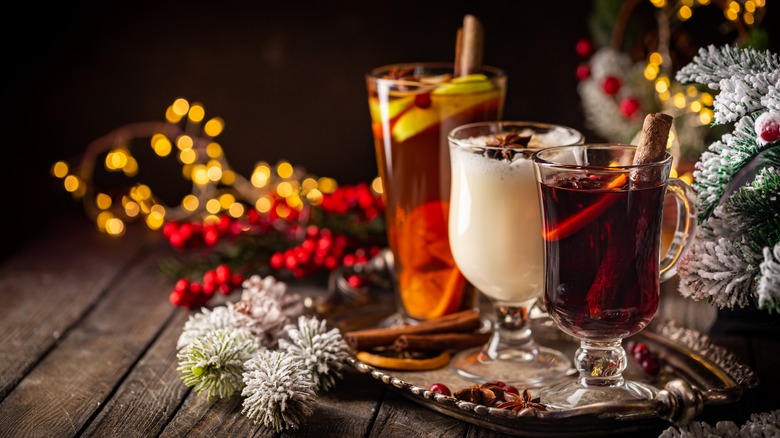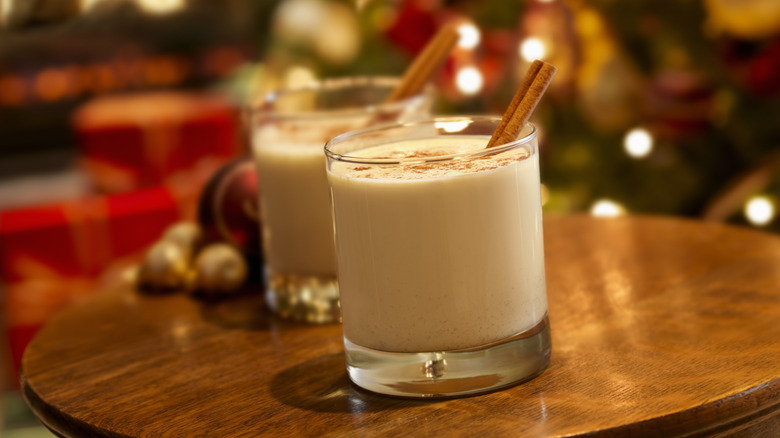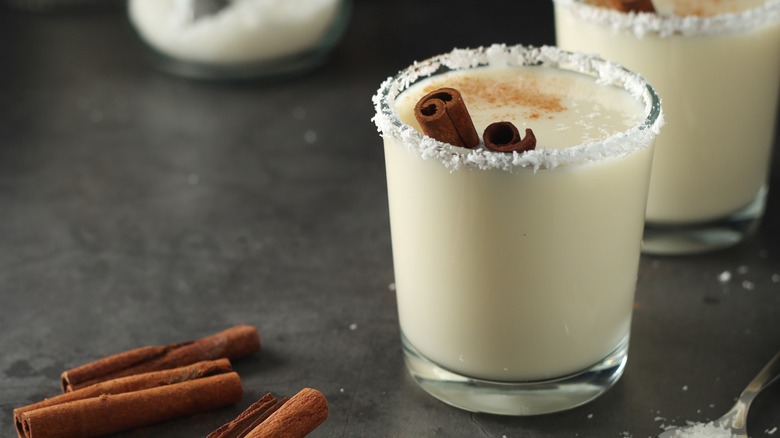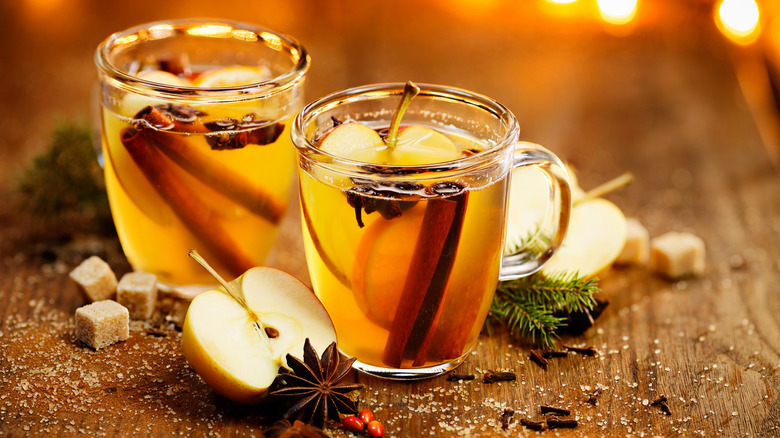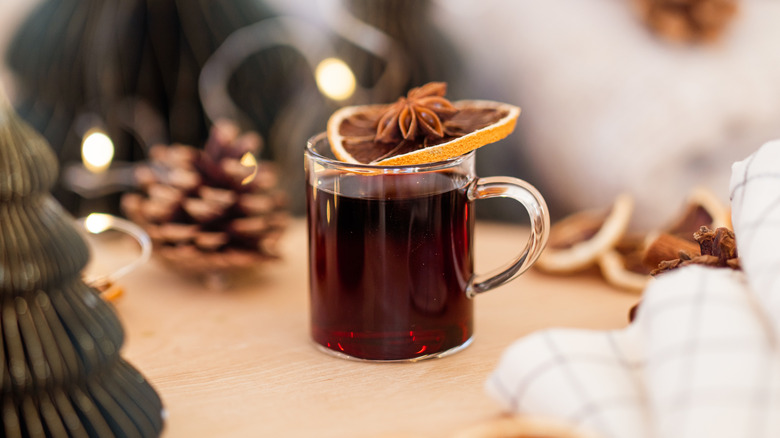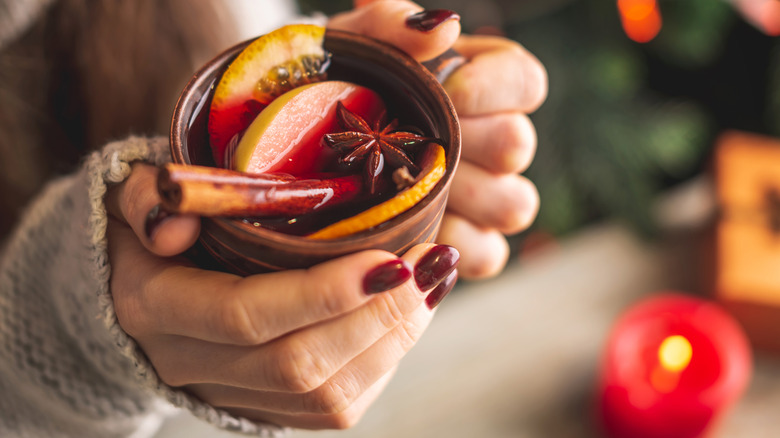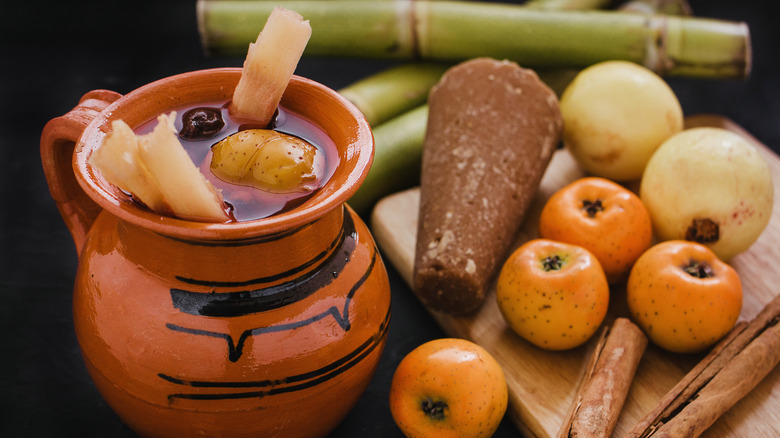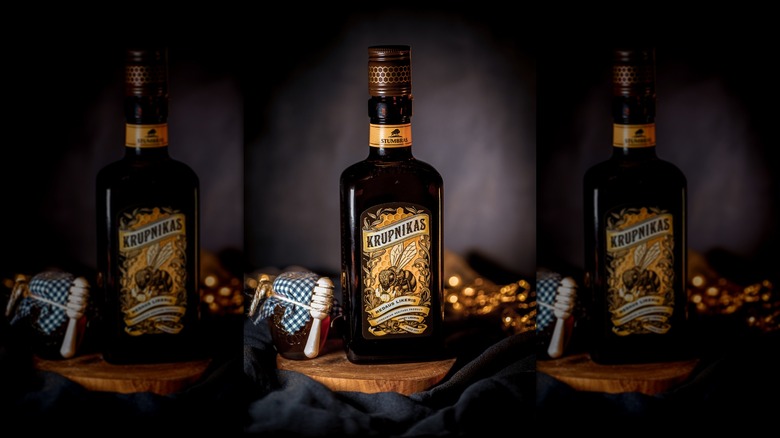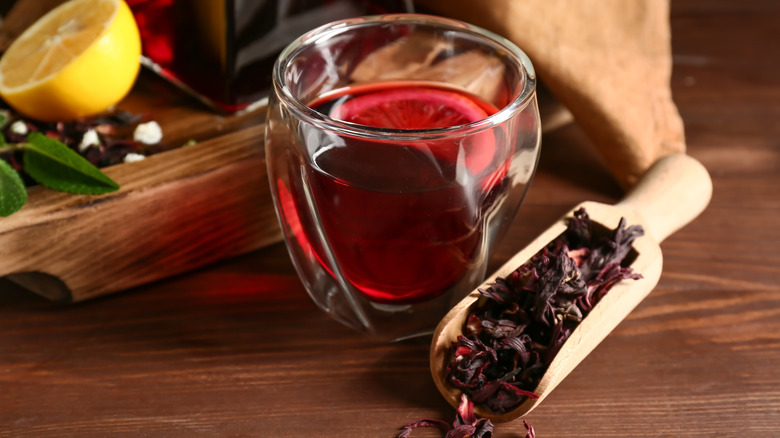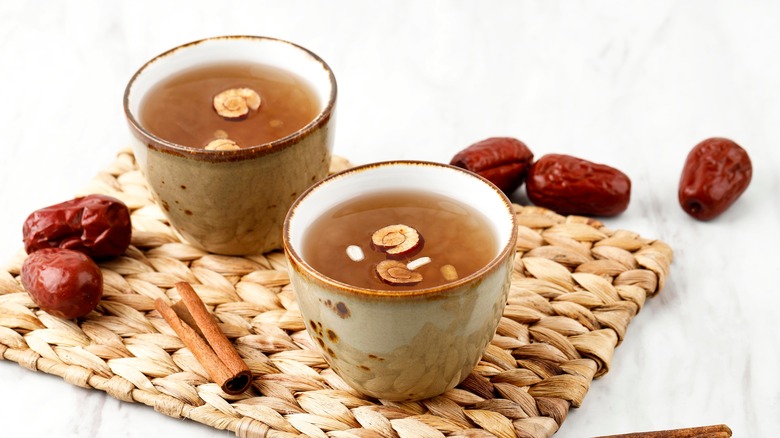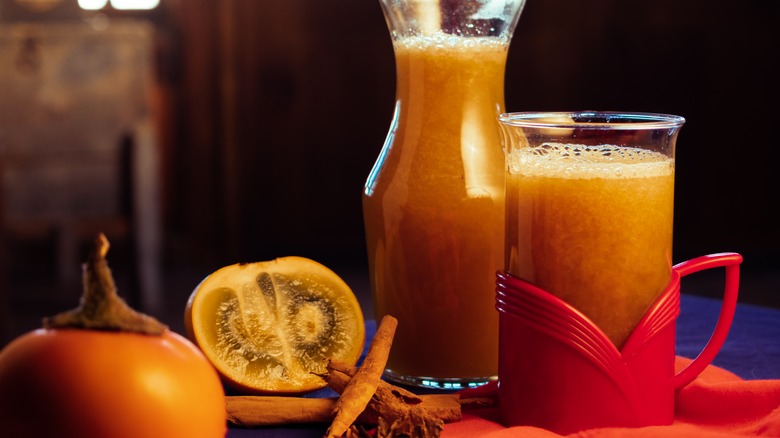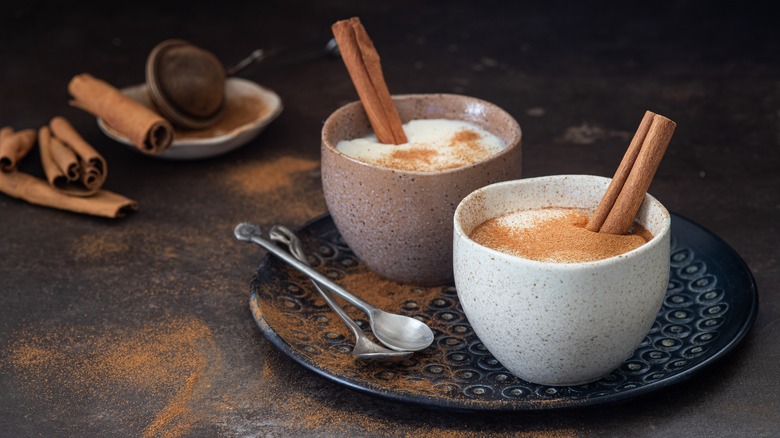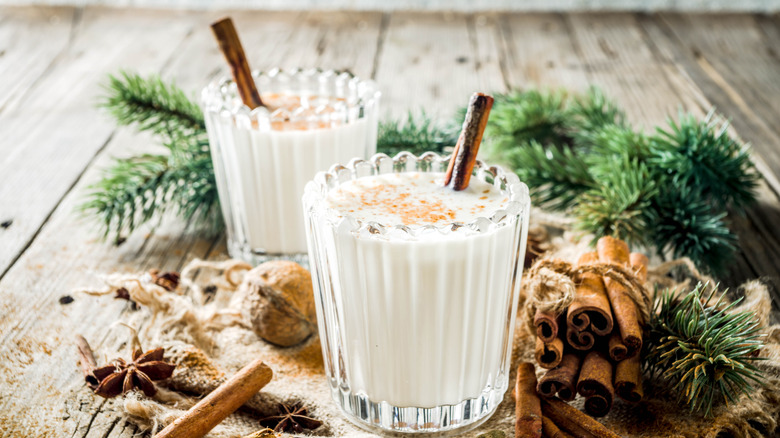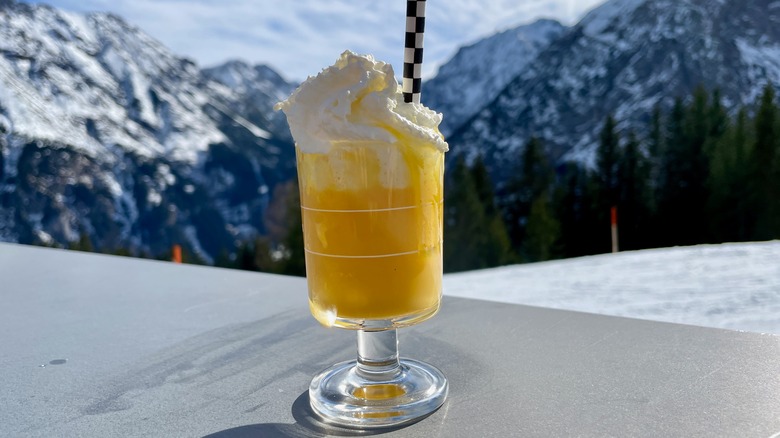13 Festive Holiday Drinks From Around The World
As winter blankets parts of the northern hemisphere in a shimmering quilt of snow, the holiday season arrives and brings festive indulgences. One of our favorite things about this time of year is the array of holiday drinks from all over the globe. The holidays are a time for getting merry — and what better way than with festive libations? We're getting ready to set off on a virtual bar crawl to discover some of the best holiday drinks from around the world, each telling its own story of seasonal joy.
Beyond the twinkling lights and familiar tunes, the beverages we share during the holidays become vessels for cultural expression. These drinks, ranging from spiced mulled wines to exotic punches, weave a global narrative that transcends borders and unites us in the spirit of celebration. Whether it's the comforting scent of cinnamon in European market squares or the tropical notes of hibiscus flowers and ginger under the Caribbean sun, each sip represents a nod to the diverse ways we all come together to mark the season. From cozy family gatherings to lively community festivities, these holiday beverages express the shared desire for warmth, connection, and the simple pleasure of raising a glass in celebration.
As an experienced food and drink writer, I've used my own knowledge of seasonal libations to get things started. But, I've also done my research, gathering opinions from food bloggers and local experts to get the lowdown on these festive drinks.
1. Eggnog: United States
Eggnog, with its rich and velvety texture, stands as an emblematic holiday beverage that's synonymous with festive gatherings and merriment. The origins of this indulgent drink can be traced back centuries, with roots in medieval Britain. It has its beginnings as posset, a hot, milky, ale-like beverage. It's since evolved into the eggnog we know today. Despite its European origins, eggnog gained widespread popularity in North America during the colonial period. It became a staple at festive gatherings, including Christmas celebrations.
Traditionally, eggnog is a blend of milk, cream, sugar, beaten eggs, and a spirit such as rum, brandy, or bourbon. The alcohol not only imparts a warm, spirited kick to the mix, but plays a crucial role in preserving the mixture. Done right, eggnog was stored for extended periods — a historical necessity in the absence of modern refrigeration. Spices, such as nutmeg, cinnamon, and vanilla, are integral to eggnog's distinctive flavor profile and its holiday spirit.
While store-bought versions of eggnog are readily available, many enthusiasts revel in the tradition of crafting eggnog at home. Families may have closely guarded recipes, with some opting for a cooked custard base for added richness and food safety. Whether enjoyed by a crackling fireplace or as part of a holiday, eggnog continues to be a beloved indulgence that can bridge generations.
2. Coquito: Puerto Rico
In Puerto Rico, coquito is a quintessential holiday libation. This coconut-based concoction has deep roots in Puerto Rican heritage. While its exact origins are challenging to pinpoint, the drink is believed to have evolved from eggnog brought over by American colonists in the 19th century.
Coquito is often described as Puerto Rican eggnog, but it rarely contains egg. It's instead typically a velvety blend of coconut milk, coconut cream, sweetened condensed milk, and evaporated milk. Alongside this, you can expect it to contain sweet festive spices, such as cinnamon and nutmeg. And, of course, let's not forget the rum!
While you can buy premade coquito in Puerto Rico, families often have their own recipes. Its warm spices make it a real holiday favorite that's reminiscent of the eggnog that many mainland Americans already know. Here, however, the inclusion of coconut milk and coconut cream give it a delicious Caribbean twist. It's well worth whipping up some of your own if you're interested in a new-to-you take on traditional eggnog.
3. Mulled cider: UK
In the heart of winter, when the cold winds sweep across the British Isles, a tradition unfolds, warming both spirits and palates — the indulgence in mulled cider. Rooted in centuries-old practices, this comforting elixir has become a quintessential part of holiday festivities, offering a sensory journey through the history and flavors of the United Kingdom.
The origins of mulled cider can be traced back to the Roman Empire, where the tradition of mulling — infusing beverages with spices — became a remedy for the winter chill. As more spices found their way into the hands of European merchants, the art of mulling expanded, giving rise to variations like mulled cider.
Apple cider is the base of this drink, but what's known as cider in the U.K. is typically deemed hard cider in the U.S., meaning it's alcoholic. The choice of apples, ranging from sweet to tart varieties, contributes to the nuanced flavor profile of the cider. The spices are what elevate mulled cider to a festive masterpiece. Cinnamon sticks, cloves, nutmeg, and sometimes star anise lend their flavors to the beverage, making a warming festive drink. It's often found served in pubs, at Christmas markets, or at other celebrations. It can also easily be made at home. Sometimes a nip of rum or brandy is added to further boost the alcohol content.
4. Glögg: Sweden and Norway
In the snow-blanketed landscapes of Sweden and Norway, a traditional winter elixir takes center stage during the holiday season: glögg. It's a mulled wine, served hot and infused with spices. Glögg can be traced back to the 1600s, when it made its first appearance in Sweden.
Glögg is a type of mulled wine that distinguishes itself with its unique Nordic twist. While both beverages share the process of being heated and infused with spices, glögg is more complex. It typically features a robust combination of red wine and a liquor such as brandy, vodka, rum, or aquavit (a Scandinavian spirit). It contains cardamom pods, which other types of mulled wine usually lack. Beverage crafters also often place almonds and raisins in the cup before serving, which contribute not only to the drink's flavor but also to its distinctive texture.
This beverage is ubiquitous at every festive market in the region and is often served with ginger biscuits or saffron buns. It's also commonly made and imbibec at home. Visitors to Swedish or Norwegian homes at this time of year will rarely leave without being served a hot mug of glögg.
5. Glühwein: Germany
In the heart of German winter festivities, where streets transform into enchanting markets, one iconic beverage takes the lead: glühwein. The history of glühwein is deeply intertwined with the evolution of mulled wine across Europe. Its roots can be traced back to the Roman Empire when heated, spiced wine was believed to ward off the chill of winter. However, it wasn't until the 19th century in Germany that glühwein became synonymous with the holiday season.
Glühwein, translating to "glow wine," is traditionally made by simmering red wine with a carefully curated blend of spices that include cinnamon sticks, cloves, and star anise. Fresh orange and lemon slices bring a hit of citrus. The result is a warm, aromatic concoction that not only serves to heat the body but also infuses the air with a festive fragrance.
Glühwein's prominence is most notable during Advent when Christmas markets spring to life across Germany. These markets, known as Christkindlmarkts, offer a haven for glühwein enthusiasts, where steaming mugs can be seen clutched in many gloved hands.
6. Ponche Navideño: Mexico
Ponche Navideño is a beloved part of many people's festive traditions in Mexico. There's some question over its origins, however. Some people say it came from Britain by way of India. Others say it can be traced back to the colonial era when it was brought over from Spain. But, wherever it came from, the drink now incorporates local fruits, spices, and a dash of Mexican ingenuity.
Ponche Navideño, which translates to "Christmas punch," is a warm fruit punch typically prepared with a base of tejocote (Mexican hawthorn) or crab apples, sugarcane, guava, and tamarind. These fruits contribute not only to the drink's sweet and tangy notes but also symbolize the abundance of Mexico's produce. Complementing the fruity base are seasonal additions such as cinnamon sticks, cloves, and sometimes star anise. In some regions, a touch of Mexican cinnamon, known as canela, adds an extra layer of warmth and complexity.
Ponche Navideño is often enjoyed during Las Posadas, the nine-night Christmas celebration that leads to Nochebuena (Christmas Eve). As the aromas of simmering fruit and spices fill the air, ponche Navideño stands as a flavorful tribute to the joyous traditions of Christmas in Mexico.
7. Krupnikas: Lithuania
If there's one thing that says "Christmas" in Lithuania, it's Krupnikas. This fragrant honey liqueur contains a blend of spices that include cinnamon, cloves, nutmeg, caraway, and allspice. Krupnikas originated in the 16th century in a Benedictine monastery in what is currently Belarus. It took off among local nobles and eventually became a staple in Lithuanian homes. While it's primarily associated with Lithuania, Krupnikas is also popular in Belarus and Poland.
Its complex blend of flavors marry the richness of honey with an assortment of spices. While recipes vary, common ingredients include cloves, cinnamon, nutmeg, and sometimes even black pepper to put together a symphony of warmth and depth. These spices are boiled down with honey, then grain alcohol or vodka is added. While there are now some artisan distilleries that make Krupnikas, it's still primarily a DIY affair. It seems like every Lithuanian family has its own top-secret recipe.
Krupnikas holds a special place in Lithuanian holiday celebrations, when it's often shared among friends and family during the festive season. The process of crafting Krupnikas is a bonding experience and a Christmas tradition in its own right.
8. Sorrel punch: Jamaica
In Jamaica, when the crimson-hued sorrel punch comes out at Christmas parties, tree trimmings, and other seasonal celebrations, it's a sure sign the festive season has started. But what is sorrel punch? The sorrel flower, also known as hibiscus, is the primary ingredient in this punch and gives the elixir its distinctive hut. The beverage is also infused with festive spices.
To make sorrel punch, simply boil sorrel petals, grated ginger, whole cloves, and crushed allspice berries together. After a short time, the mixture is stored in the fridge for at least eight hours but up to three days, to let the flavors infuse. The next step is to strain out the solids and mix the sorrel infusion with sugar syrup to taste.
Unlike many festive drinks, it's served cold, which is likely a reflection of the balmy temperatures often felt in Jamaica at Christmastime. Sorrel punch is non-alcoholic, making it great for kids or anyone who simply doesn't want to get tipsy. That said, it's also often enjoyed with rum to give it a kick.
9. Sujeonggwa: Korea
Sujeonggwa is a notable part of Korean winter festivities, though it isn't necessarily considered a Christmas drink. However, it's commonly consumed at New Year and during the Moon Festival. The first mention of this punch dates back to 1765 during the Joseon Dynasty, but some ingredients — such as persimmon — seem to be later additions.
But what exactly is sujeonggwa? Well, it's a cinnamon and ginger punch that is often served with the addition of dried persimmons and pine nuts. The process involves simmering cinnamon and ginger to extract their flavors, creating a deep and fragrant infusion. The addition of brown sugar or honey imparts a subtle sweetness that helps to balance the spices' warmth. The persimmon and pine nuts are then added as garnishes. It can be served either hot or cold.
The act of preparing sujeonggwa is often a family affair, with generations coming together to share in the process. As the fragrance of cinnamon and ginger wafts through Korean households, it establishes itself as a sensory marker of the season's festivities.
10. Canelazo: South America
Amid the majestic peaks of the Andes in South America, a traditional winter warmer have proven itself to be the MVP of the holiday season: canelazo. Originating from the high-altitude regions of Peru, Ecuador, Colombia, and the northern parts of Argentina, this spiced concoction is a festive favorite that is served warm to beat the winter chill.
Because it's served over such a wide region, canelazo ingredients can vary quite a lot. But what everyone can agree on is that it should be warm, alcoholic, and spiced. The drink is typically crafted from a base of aguardiente, a potent sugar cane spirit that lends robust character to the brew. It's usually spiced with cinnamon, but star anise can be added, especially when in Colombia.
Canelazo's preparation and consumption have become integral to Andean celebrations, especially during festivals and holiday gatherings. Local markets come alive with the aromatic allure of this spiced elixir, inviting passersby to pause and savor a cup of festive warmth. Street vendors are often known to add local juices to their canelazo, so it can vary quite a bit depending on who made it.
11. Salep: Turkey
Turkey's winter favorite, salep, is traditionally made using an ingredient you may not have heard about. That would be a powder made from the dried roots of orchids, known as salep, which is where the drink gets its name. It may date back to the Ottoman Empire, as there's some evidence to suggest it was drunk in royal palaces as long ago as the 15th century.
The other ingredients in salep are simple, consisting only of milk, sugar, and cinnamon. They're heated and combined to create a hot, sweet, and lightly spiced drink that's hugely popular in winter. Salep is renowned for its distinctive thick and velvety texture, thanks largely to the use of salep powder. That said, it has very little flavor on its own, so today it's common for the drink to be thickened with other, more readily available starches — even simple wheat flour will do the trick. Another reason why alternative starches are often used is that rare orchids are disappearing in Turkey, given that their roots are largely over-foraged.
12. Cola de mono: Chile
If you know anything about Chilean winter festivities, you've probably heard of cola de mono. The name of this beloved Yuletide drink translates to "monkey's tail." Its ingredients may vary slightly depending on the recipe, though a typical cola de mono recipe includes spirits such as Aguardiente or Pisco, milk or evaporated milk, sugar, coffee, and spices. Common spices include cloves, cinnamon, and vanilla, which add warmth and complexity.
Various legends surround the origin of cola de mono. One popular belief is that the beverage originated in the early 20th century during a high-society house party. Wherever it came from, cola de mono has become an integral part of Chile's modern Christmas traditions.
It's commonly made in homes all over Chile, but it's also available ready-made for those who don't want to go the DIY route. Since Chile is in the southern hemisphere, Christmas falls in the middle of summer, so it's served cold. It's in effect a boozy spiced iced coffee. That said, we're sure it would be delicious served warm, too.
13. Bombardino: Italy
In the snowy alpine regions of Italy, where winter snows transform the landscape into a breathtaking tableau, the bombardino is a cherished holiday libation. This creamy drink has its origins in the ski culture of the Italian Alps, where it is said to have been invented when skiers came into a mountain lodge seeking something warm to drink. The owner of the lodge mixed together what he had — alcohol and egg custard — to create a warming beverage.
Today, a bombardino is a blend of egg-based liqueur (such as Advocaat) and brandy. It's served warm, topped with whipped cream and a heavy sprinkling of cinnamon.
The bombardino has become synonymous with winter holidays and après-ski gatherings in the Italian Alps. Whether enjoyed in the rustic ambiance of a lodge or amidst the vibrant atmosphere of a ski resort, a bombardino brings a touch of indulgence to the snowy panorama. But, of course, you could also make it yourself at home if you want to try it without taking a trip to the Alps.
